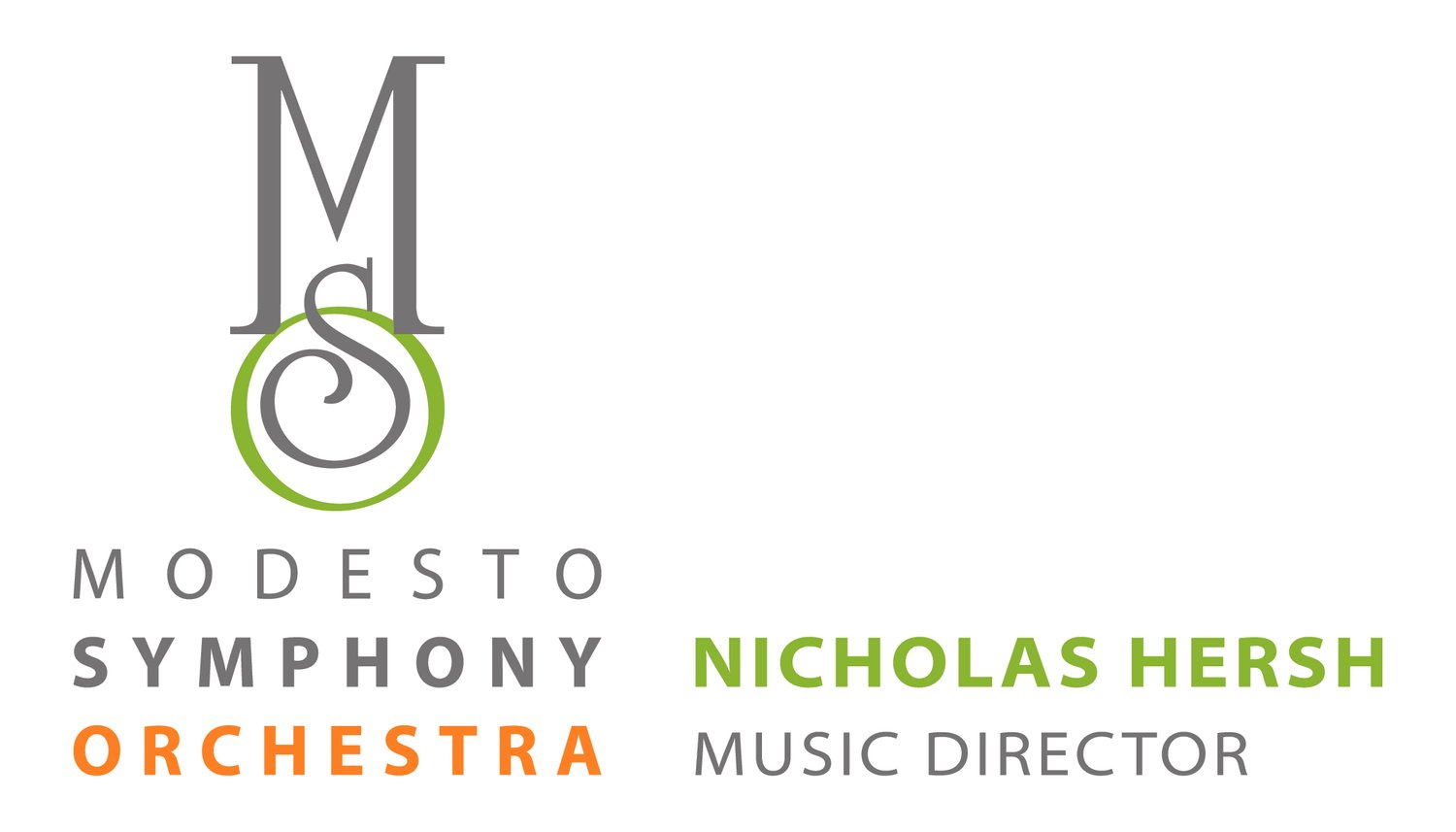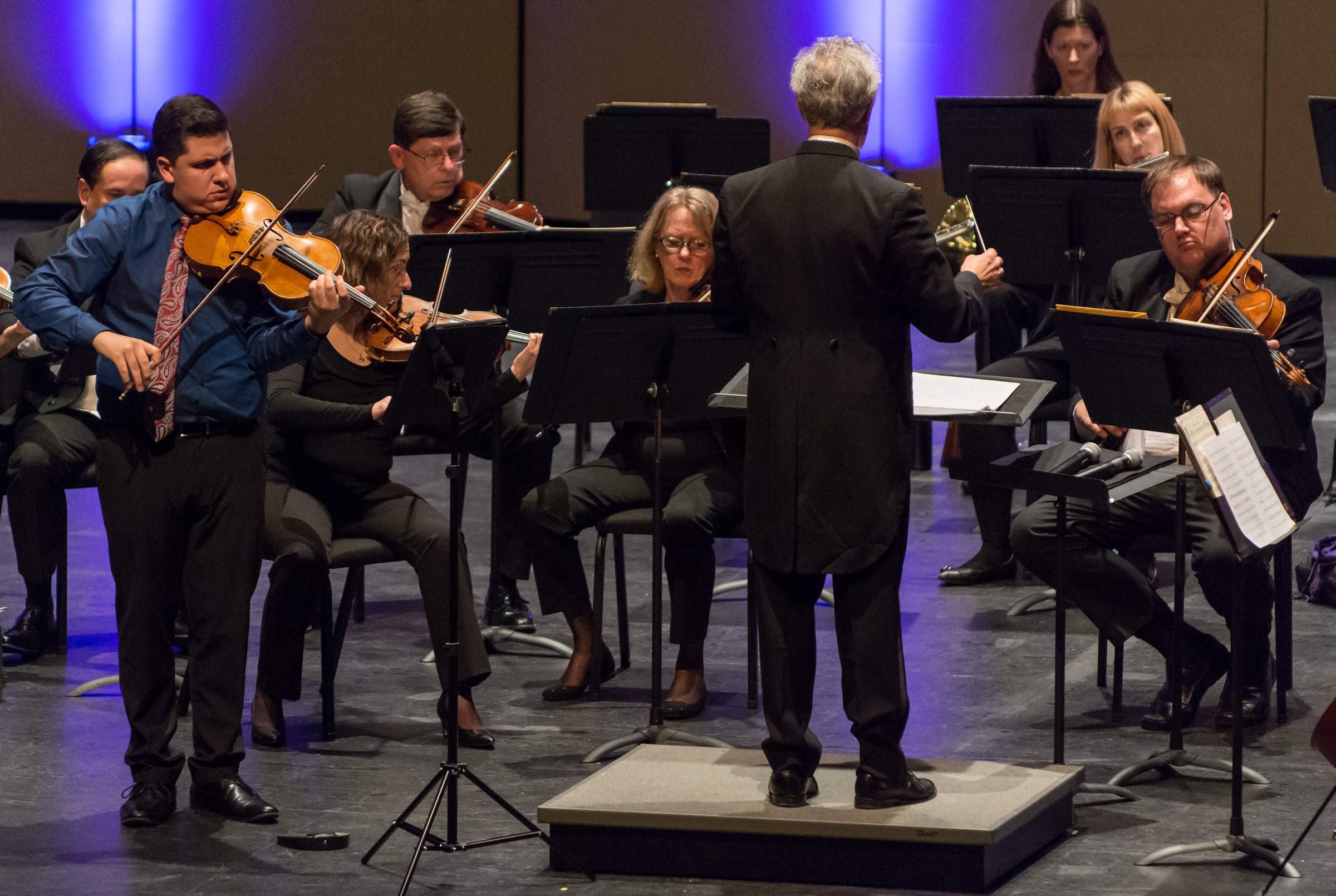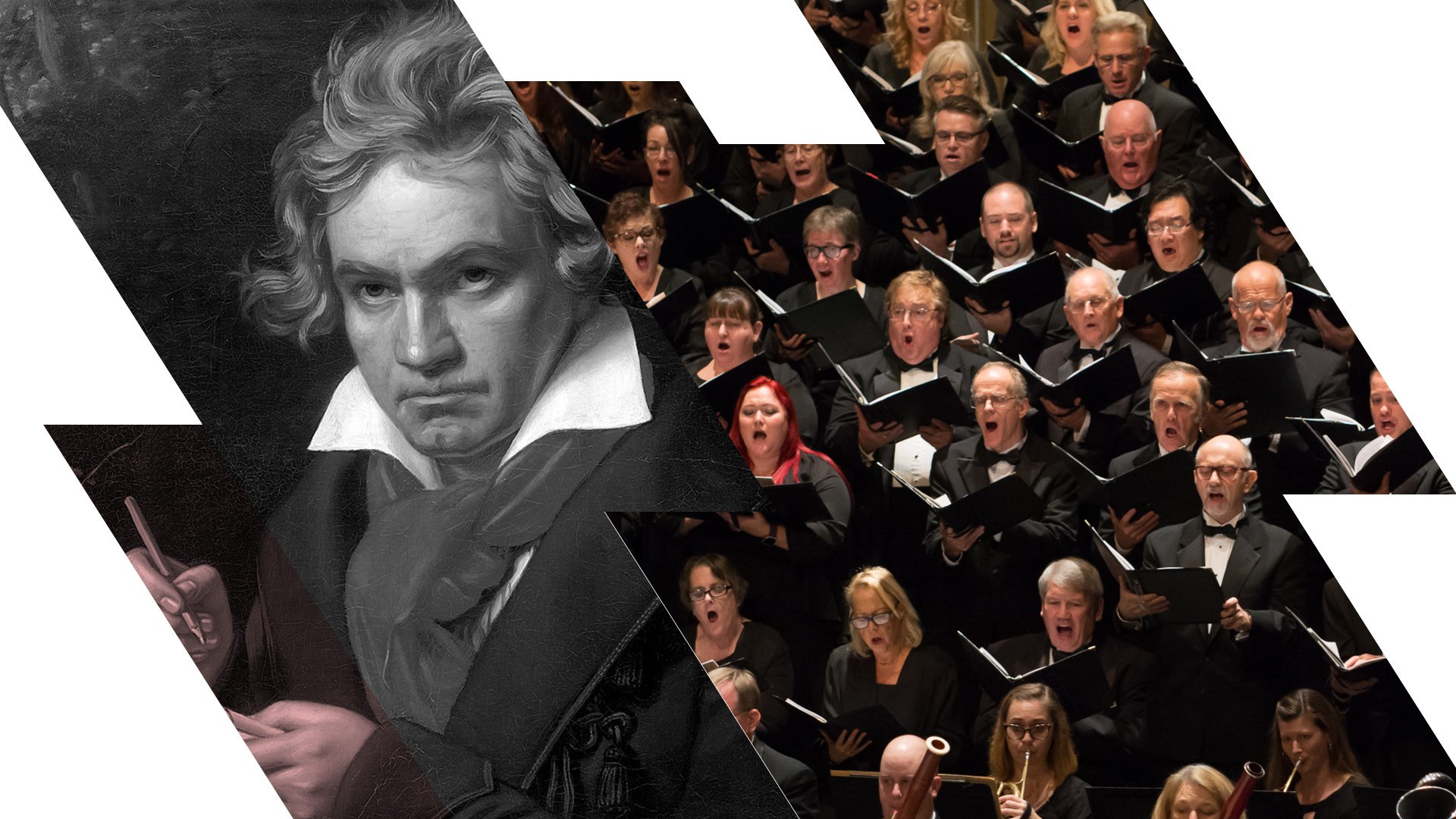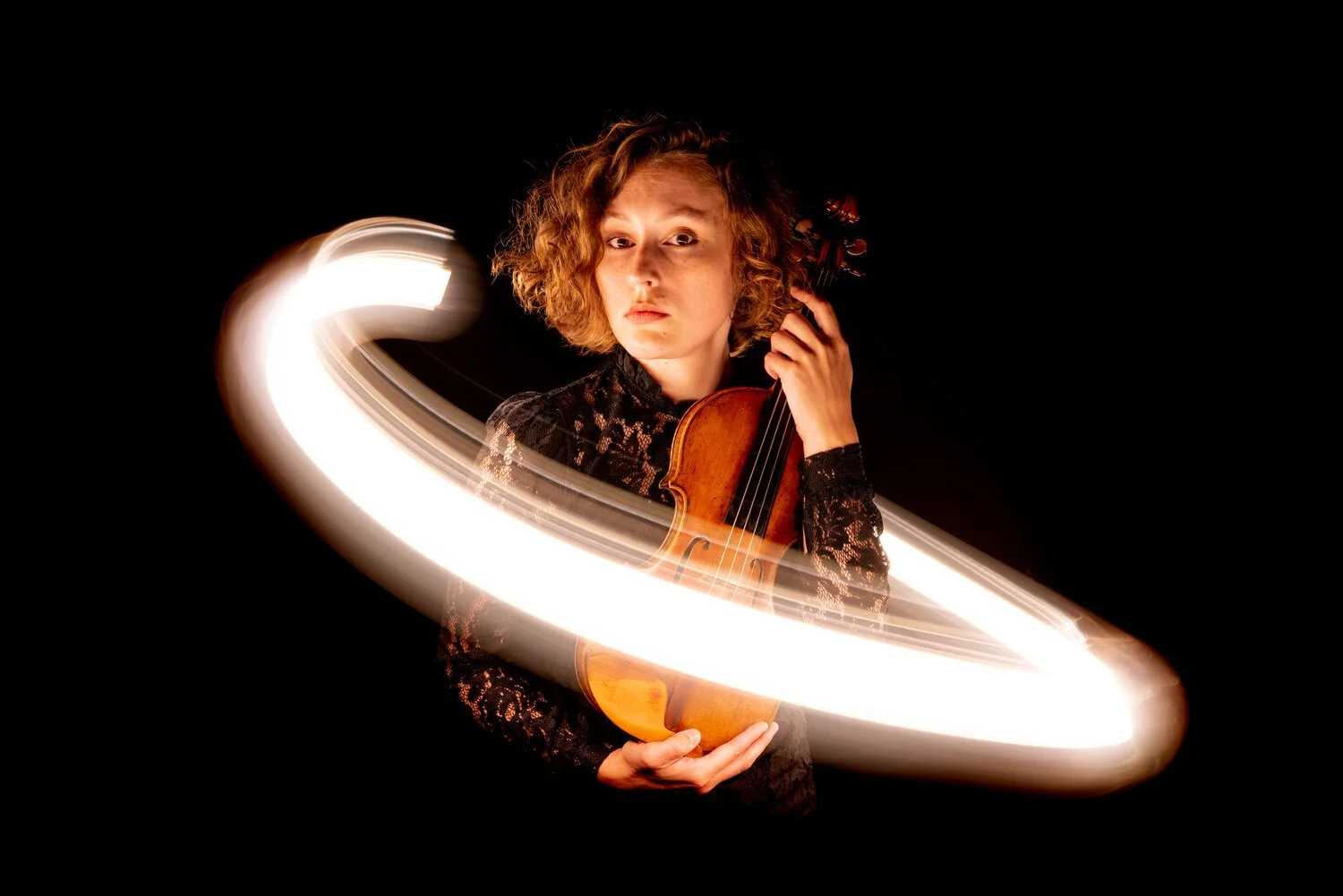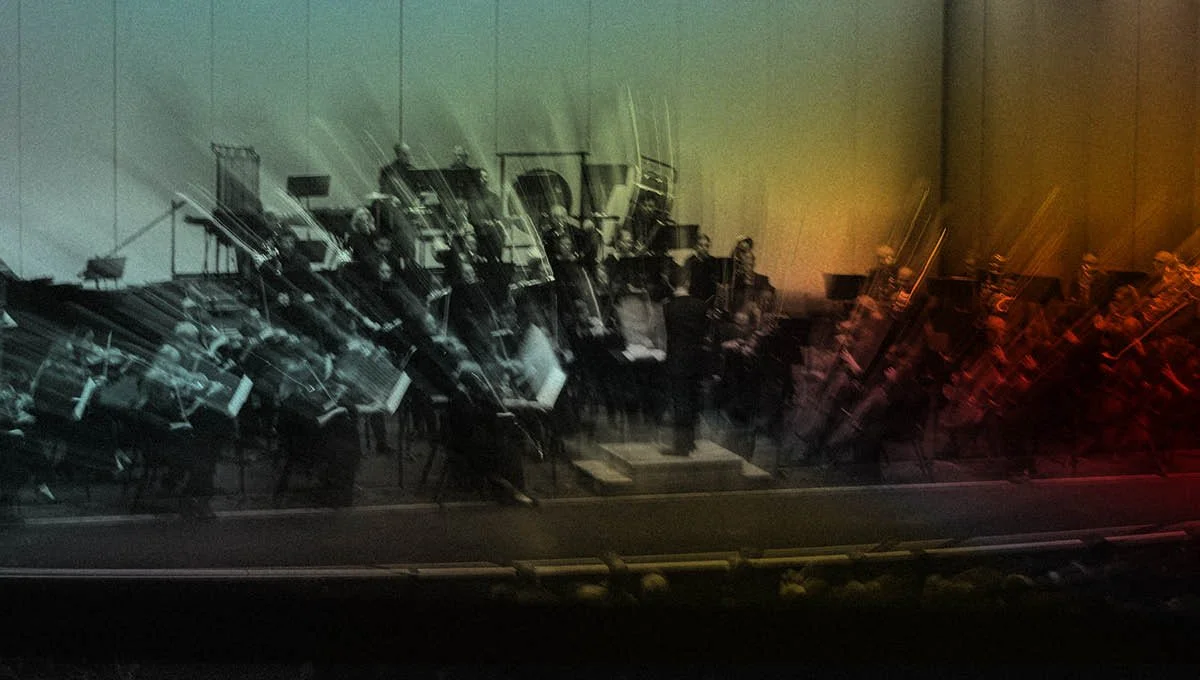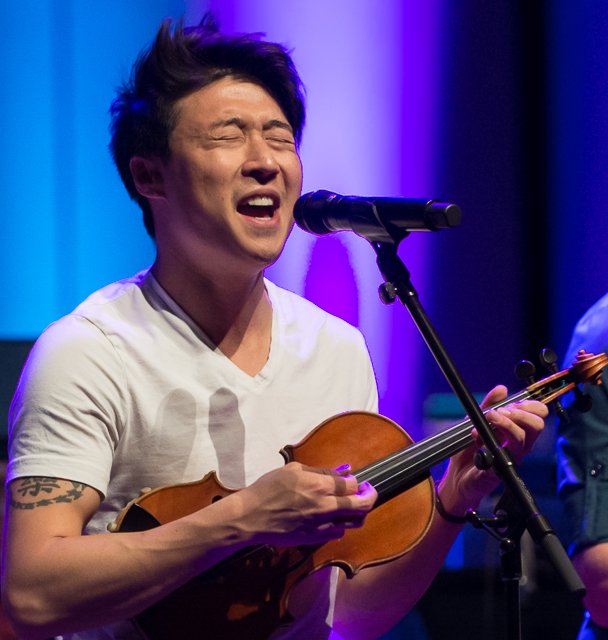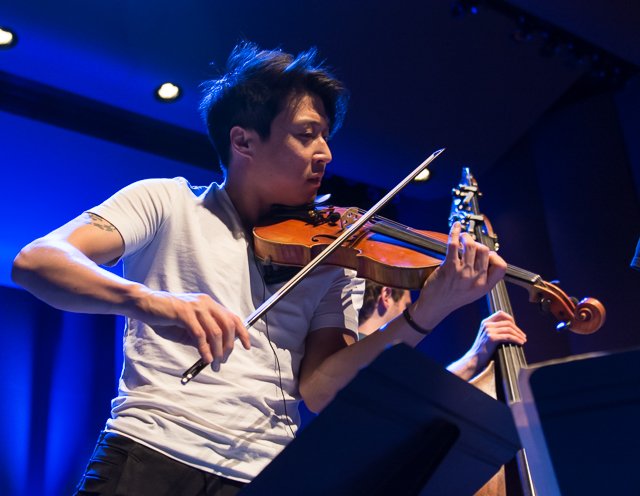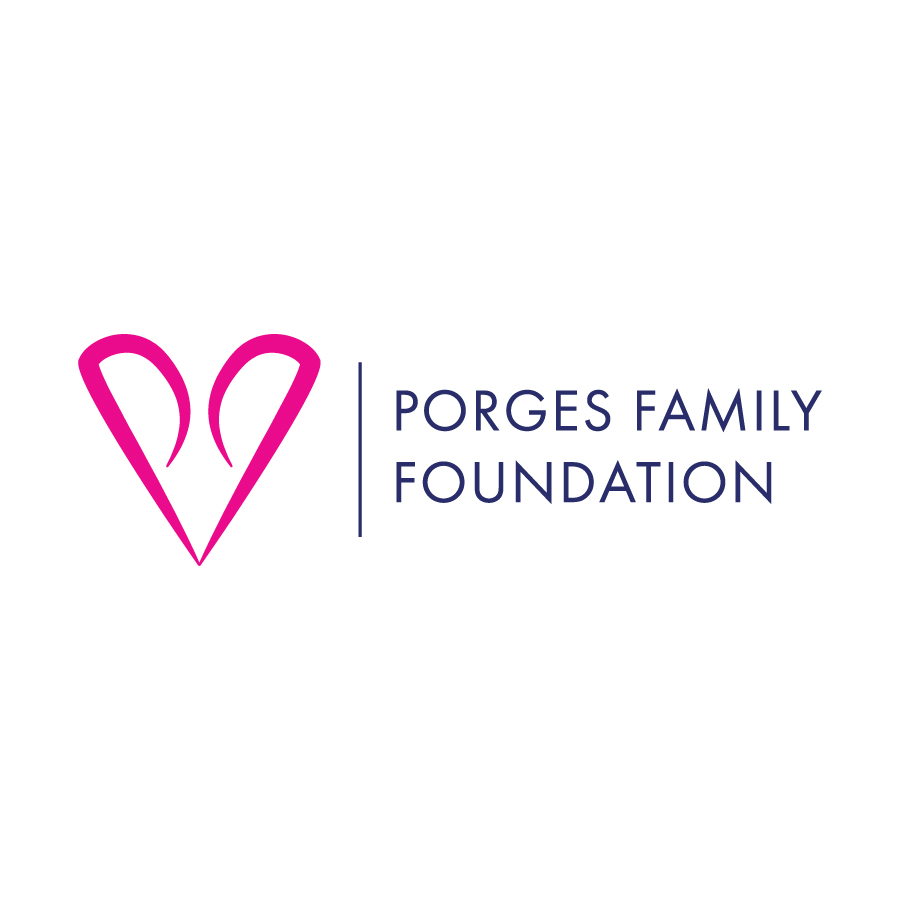Meet the MSO: Don Grishaw, violin
We’re bringing the stage to you! We asked Don Grishaw, violinist for the MSO and MSYO Concert Orchestra conductor, a few questions about his experience with the Modesto Symphony Orchestra thus far, what he’s looking forward to and more about himself: from his secret talent to his own ‘theme music’. Read on and learn more about your Modesto Symphony Orchestra!
MSO: Tell us about yourself, and how you came to play with the Modesto Symphony Orchestra?
Don Grishaw (circled), violinist, circa 1990s.
I auditioned for the Modesto Symphony when I arrived in Turlock in 1982. The conductor at that time was Sandor Salgo. I have been a member of the violin section ever since. I also conduct the Concert Orchestra division of the Modesto Symphony Youth Orchestra. I am a retired public-school educator. I taught Music and Spanish at the secondary level and bilingual education classes at the elementary level. I am married to my beautiful wife, Angelica, and I have two grown children, Elizabeth and Andrew. We are all musicians.
Don (center), pictured with (left-to-right) daughter-in-law Paige & son, Andrew; wife, Angelica; and daughter, Elizabeth
MSO: What is your favorite memory playing with the MSO so far?
I have many favorite memories of playing with the Modesto Symphony, but I think my favorite memory is when my son Andrew Grishaw performed as a viola soloist with the symphony in 2019. He played the Violet Viola Concerto composed and conducted by David Lockington. It was heartwarming to hear my son play so passionately and to be on stage with him.
MSO: What are you most looking forward to for the rest of the 2023/2024 season?
I enjoy every concert. I enjoy performing new pieces and I enjoy performing pieces that I have played many times before. This season I am most looking forward to performing Beethoven’s 9th Symphony in May. This work amazes me more and more every time I perform it! Beethoven truly speaks to us through music in this great masterpiece.
Get to know don!
If you weren’t a conductor/musician, what would you want to be?
I have been an educator all my life, so I would choose teaching.
What instrument(s) do you play? Violin, viola, and piano
What would be the theme music to your life? “Gema” sung by Los Dandys. It is a beautiful love song in Spanish that my wife and I call “our song”.
What are you binge-watching right now? I like crime dramas. S.W.A.T. is my favorite.
Do you have a secret talent? Horses. In my younger days, I worked at a horse pack station in the Sierras guiding summer pack trips.
If you had a time machine, would you go back in time or into the future?
I would go back in time so I could relive the days of the Old West.
Go to the beach, or go to the mountains?
Hard choice, but I would pick the mountains. I love the smell of the mountains and the scenery is always gorgeous.
Come see Don play on stage, and meet him along with the rest of the orchestra at Symphonic Soundtrack this March 15th and 16th at the Gallo Center for the Arts!
